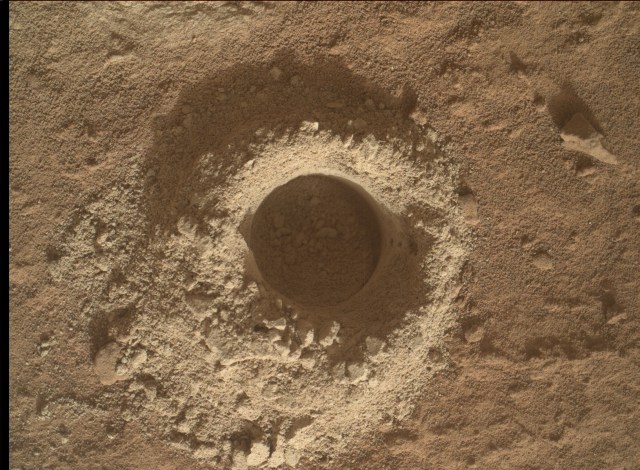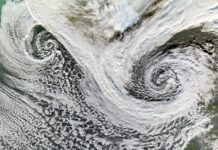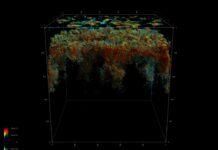Curiosity Rover’s Latest Endeavor: Exploring the Gediz Vallis Deposit
In an ongoing mission that has captivated space enthusiasts and scientists alike, NASA’s Curiosity Rover is preparing to depart from its current location near the Mammoth Lakes drill site. This relocation is part of a detailed three-sol weekend plan, where "sol" refers to a Martian day, approximately 24 hours and 39 minutes. Before Curiosity moves, the mission team aims to conduct one final round of contact science in this fascinating region of the Gediz Vallis deposit.
Understanding the Significance of Gediz Vallis
The Gediz Vallis deposit is a geological treasure trove located within Gale Crater on Mars. This area has intrigued scientists due to its unique composition and geological history. The bright-toned, pitted blocks scattered throughout the region provide critical clues about Mars’ past, particularly its water history and sedimentary processes.
The Role of MAHLI in Mars Exploration
One of the key instruments onboard Curiosity is the Mars Hand Lens Imager (MAHLI). This camera is designed to capture high-resolution images of rocks and soil, allowing scientists to examine the fine details of Martian geology. The team has observed distinct troughs surrounding many of the bright-toned blocks in the Gediz Vallis deposit and has been eager to get closer images using MAHLI.
Due to the presence of powdered material from the Mammoth Lakes drill site in the rover’s drill stem, the team previously couldn’t conduct close-up imaging. However, with the successful dumping of the remaining material, Curiosity’s arm is now free to perform contact science again, including the use of the MAHLI camera.
Targeting "Glacier Notch" and "Lake Ediza"
The first target for MAHLI’s close-up imaging is a block named "Glacier Notch." The team plans to take images from about 30 centimeters (approximately 12 inches) away from this block. Unfortunately, "Glacier Notch" is positioned too close to the rover to allow the Alpha Particle X-Ray Spectrometer (APXS) to examine its chemical composition. APXS is another vital instrument that helps determine the elemental composition of Martian rocks and soil.
As a result, the team has selected a different target for APXS analysis: "Lake Ediza." This target is an example of gray material that rims the Mammoth Lakes drill block. By analyzing "Lake Ediza," scientists hope to gain further insights into the geological diversity and history of the region.
The Importance of Contact Science
Contact science involves using instruments that physically interact with the Martian surface. This approach allows for detailed analysis of the planet’s geology, providing data that remote sensing instruments alone cannot offer. Instruments like MAHLI and APXS play a crucial role in this process, enabling scientists to study the texture, structure, and composition of Martian rocks and soil in unprecedented detail.
The Broader Implications of Curiosity’s Mission
Curiosity’s exploration of the Gediz Vallis deposit is part of a broader mission to understand Mars’ past habitability. By studying different geological features and their compositions, scientists can piece together the planet’s history, including the presence and duration of water, which is a key factor in assessing Mars’ potential to support life.
Public Reactions and Scientific Reviews
The Curiosity Rover’s mission has garnered significant attention from both the scientific community and the general public. Scientists are particularly excited about the high-resolution images and chemical analyses that Curiosity provides, as these data are essential for advancing our understanding of Mars.
Public interest in Curiosity’s mission remains high, with many people following updates on social media and NASA’s website. The rover’s discoveries continue to inspire curiosity and wonder about the possibilities of life beyond Earth and the future of human exploration on Mars.
Conclusion
As Curiosity prepares to drive away from the Mammoth Lakes drill location, the upcoming contact science activities in the Gediz Vallis deposit represent another critical step in unraveling the mysteries of Mars. The high-resolution images from MAHLI and the chemical analyses from APXS will provide valuable data that contribute to our understanding of the Red Planet’s geological history and its potential for past habitability.
Curiosity’s mission exemplifies the spirit of exploration and scientific inquiry, reminding us of the vastness of our universe and the endless possibilities it holds. As we continue to follow Curiosity’s journey, each new discovery brings us closer to answering fundamental questions about Mars and our place in the cosmos.

































